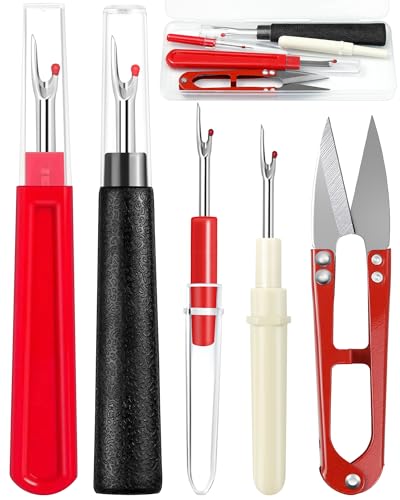Sewing can be a delightful and creative journey, especially when you have the right tools. If you’ve ever struggled to create perfect buttonholes, you’re not alone. Using a buttonhole foot on your machine can transform that experience, making the process smooth and precise.
Imagine adding flawless buttonholes to your favorite shirts or homemade cushions with ease. Whether you’re a seasoned sewist or just starting out, mastering the buttonhole foot will elevate your projects and give them a professional touch. Let’s explore how you can make the most of this handy attachment and enhance your sewing skills.
Understanding the Buttonhole Foot
A buttonhole foot attaches to your sewing machine, enabling you to create accurate buttonholes with ease. It stabilizes the fabric and guides the needle, ensuring consistent stitch placement and uniform buttonhole sizes. This tool is essential for achieving professional-looking results in your sewing projects.
Key Components:
- Stitch Guides: Align your stitches precisely.
- Presser Arm: Keeps the fabric steady during stitching.
- Rollers: Facilitate smooth fabric movement.
- Base Plate: Secures the foot to your sewing machine.
Buttonhole feet are compatible with most modern sewing machines. To use it effectively, adjust the stitch length and tension settings based on your fabric type and button size. Refer to your machine’s manual for specific instructions and compatibility details.
Installing the Buttonhole Foot
- Turn off your sewing machine and unplug it.
Starting the installation ensures safety by preventing accidental operation.
- Remove the current presser foot by releasing the latch.
Clearing the area allows you to attach the buttonhole foot without obstruction.
- Align the buttonhole foot with the machine’s hook.
Proper alignment ensures the foot functions correctly during stitching.
- Slide the buttonhole foot into place until it clicks securely.
Locking the foot guarantees stability while creating buttonholes.
- Adjust the stitch length and tension settings as needed.
Fine-tuning these settings optimizes buttonhole quality based on your fabric and button size.
- Test the buttonhole foot on a scrap piece of fabric.
Verifying the setup helps you make necessary adjustments before starting your project.
Adjusting Settings for Perfect Buttonholes
Fine-tuning your sewing machine’s settings ensures each buttonhole appears uniform and functions smoothly. Follow these steps to achieve optimal results.
Choosing the Right Stitch
Selecting the appropriate stitch type enhances the durability and appearance of your buttonholes. Consider these options:
- Zigzag Stitch: Provides flexibility and strength, suitable for various fabric types.
- Stretch Stitch: Offers elasticity, ideal for knit and stretchy materials.
- Overlock Stitch: Neatly finishes edges, best for thick or layered fabrics.
- Flat-Felled Stitch: Creates a sturdy, flat finish, often used in denim and heavy textiles.
Setting Buttonhole Size
- Width Adjustment: Set the buttonhole width based on the button’s diameter.
- Length Adjustment: Align the buttonhole length with the button’s spacing.
- Placement Guides: Utilize your machine’s placement guides for uniform spacing.
- Fabric Consideration: Modify settings according to fabric type; lightweight fabrics may require smaller buttonholes compared to heavy fabrics.
| Button Size | Width (mm) | Length (mm) |
|---|---|---|
| Small | 2.5 | 10 |
| Medium | 3.0 | 12 |
| Large | 3.5 | 15 |
Using the Buttonhole Foot Effectively
Mastering the use of the buttonhole foot enhances your sewing projects with professional-quality buttonholes. Follow these guidelines to achieve consistent and flawless results.
Steps to Create a Buttonhole
- Attach the Buttonhole Foot
- Ensure your machine is off and unplugged.
- Remove the existing presser foot.
- Align and secure the buttonhole foot onto your sewing machine.
- Select the Buttonhole Stitch
- Choose the appropriate stitch type, such as zigzag or stretch stitch.
- Refer to your machine’s manual for specific stitch settings.
- Adjust Stitch Length and Width
- Set the stitch length to match the button size.
- Adjust the stitch width for wider or narrower buttonholes as needed.
- Mark the Fabric
- Use a fabric marker or chalk to indicate where the buttonhole will be placed.
- Measure accurately to ensure symmetry.
- Sew the Buttonhole
- Place the fabric under the buttonhole foot, aligning the marker with the needle.
- Lower the presser foot and start sewing, guiding the fabric smoothly.
- Release the needle and remove the fabric once the buttonhole is complete.
- Finish the Buttonhole
- Trim excess threads and secure the edges with overlocking or zigzag stitches.
- Attach the corresponding button securely.
Common Mistakes to Avoid
Incorrect Foot Attachment
- Ensure the buttonhole foot is properly aligned and locked in place before sewing.
Improper Stitch Settings
- Avoid using the wrong stitch length or width, as it can lead to uneven buttonholes.
Skipping Fabric Stabilization
- Always stabilize your fabric with the machine’s built-in features to prevent puckering.
Inadequate Marking
- Precise marking is crucial. Inaccurate markings result in misaligned buttonholes.
Rushing the Sewing Process
- Take your time to guide the fabric steadily for uniform stitches and consistent buttonhole size.
- Regularly clean and maintain your sewing machine to ensure smooth operation and quality results.
By following these steps and avoiding common pitfalls, you can effectively use the buttonhole foot to create neat and durable buttonholes in all your sewing projects.

Maintaining Your Buttonhole Foot
- Cleaning: Remove lint and threads using a soft brush or compressed air. Focus on stitch guides, rollers, and the base plate to prevent build-up.
- Inspection: Examine stitch guides, rollers, and attachments for wear or damage. Replace any faulty components promptly to maintain stitch accuracy.
- Lubrication: Apply sewing machine oil to moving parts monthly. Proper lubrication minimizes friction and prevents rust.
- Storage: Store the buttonhole foot in a dry, dust-free area. Use a protective case or cover to shield it from debris and potential damage.
Conclusion
Now you can create flawless buttonholes with ease using your buttonhole foot. It’s a simple tool that can make a big difference in your sewing projects.
Take your time to practice and find the settings that work best for you. With a bit of patience you’ll see your buttonholes turn out professional every time.
Enjoy the process and watch your sewing skills grow as you tackle more projects. Happy sewing!

















